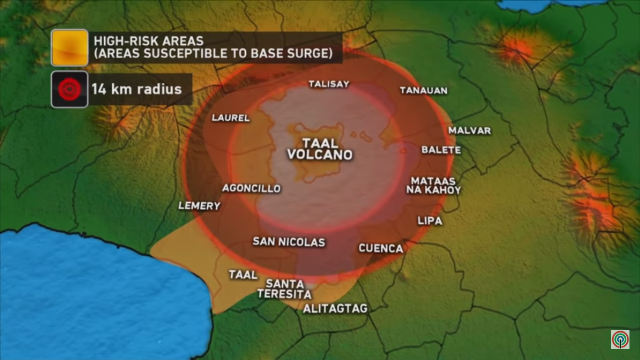News that keeps up with science

JOURNALISTS HAVE demonstrated improved capacity in reporting tropical cyclones and its dangers. Some 20 typhoons a year gives the press a lot of practice. With the eruption of Taal, journalists must prepare to report another kind of disaster phenomenon.
Taal’s eruption forced the media and even local government units to grapple with the reality of a country situated in the Pacific “Ring of Fire.” The Philippine Institute of Volcanology and Seismology (Phivolcs) listed 24 active volcanoes based on their eruptive history. Its website maps their location and describes the unique tectonic setting of the archipelago. But coverage of Taal’s eruption revealed a prevailing general ignorance about the hazards posed by volcanoes.
Charlie Natanauan, vice mayor of Talisay town in Batangas slammed Phivolcs on January 20 during a radio interview, questioning its capacity to issue warnings and its supposedly late advisories. The media did not give it prominence, but a few accounts quoted him as well as the official response of Phivolcs defending their warnings as backed by science, as though there was any question about which side was making sense. Such reports should have stated the official role the agency has creditably played.
CMFR has noted the effective use of visual storytelling in reporting climatic events. It is a skill that the media must hone.
Some media organizations proved their capacity to clarify topics through visualization, as state volcanologists studied Taal’s activity, eventually downgrading the Alert level from 4 to 3 on January 27, two weeks after it had warned of an imminent “hazardous eruption.”
CMFR monitored coverage in free TV (ABS-CBN 2’s TV Patrol, TV5’s Aksyon, GMA-7’s 24 Oras, CNN Philippines’ Newsroom Weekend and News Night) and print (Philippine Daily Inquirer, The Philippine Star, and Manila Bulletin) from January 16 to 27.
The news media dutifully reported updates by Phivolcs and tried to cut through the scientific jargon. CMFR noted broadsheets tirelessly defining terms and making clear what certain observations, like the increase of sulfur dioxide in the air and the appearance of fissures or cracks meant.
Ultimately, the Taal Volcano eruption is a science story, and while its restlessness continues, the task of journalism is to keep up with what scientists have to say. But the earlier use of graphic imagery, which would have helped demonstrate the intricacies of volcanic activity, was not sustained.
Some notable reports on TV
CMFR cheers the following as examples of explanatory journalism:
24 Oras’ “Mapa ng Batangas, literal na nabago ng pagsabog ng Taal Volcano noong 1754” on January 12 had anchor Mel Tiangco explaining the meaning of “base surge,” or the horizontal explosion of ash, steam and rocks that could cut through Taal Lake. Tiangco reported with a 3-D background showing what the risks mentioned would look like.
News Night’s “Phivolcs: 3 deadly events possible in Taal eruption” on January 17 recapped scenarios and the dangers each pose. The report illustrated the potential reach of damage, showing a map of the volcano island and surrounding towns.
TV Patrol’s “Alamin: kahulugan ng scientific terms na may kinalaman sa Taal” on January 24 had reporter Jeff Canoy and Mahar Lagmay, geologist and director of the University of the Philippines Resilience Institute (UPRI) breaking down technical terms. The report included a 3-D representation of the Taal Volcano island, showing how different scenarios would play out in case a hazardous eruption happens.
But these were standalone stories. Succeeding updates lacked ingenuity in reviewing continuing dangers. With the threat of the novel coronavirus taking over the news, reports on Taal are now mostly limited to updates on the status of evacuees. Understanding volcanoes and viruses pose the same challenge to journalists because media must play a crucial role in promoting among Filipinos greater appreciation and awareness of scientific matters that affect their safety and well-being.
Other informative reports:
The danger of living near Taal volcano (The Chiefs, One News, January 20, 2020)
Laymanizing volcano lingo (Philippine Daily Inquirer, January 19, 2020)
Explainer: Taal Volcano alert levels (Rappler, January 15, 2020)
Explainer: Taal topography (Aksyon, January 15, 2020)
Explainer: The hazards of Taal (Aksyon, January 14, 2020)
Leave a Reply